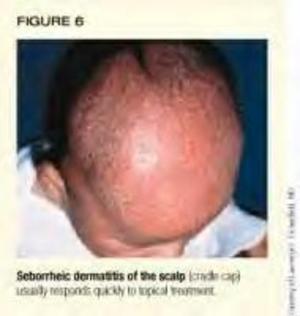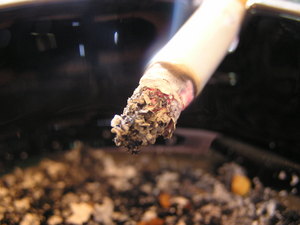Babies are supposed to be cute, cuddly and fun. There’s nothing more disconcerting when that image of the clean, soft smelling baby is distorted by ugly, yellowish, greasy scales on their head or forehead.
This condition is called cradle cap and affects over 88% of newborns. The exact cause of cradle cap is unknown, however, according to Wikipedia, cradle cap seems to be related to hormonal changes in the infant after birth, causing overactive oil glands in the affected area. This is a very common problem and does not indicate illness or poor hygiene so to parents who are experiencing this, it’s okay! This is not something that could have been prevented.
In a parent’s mind, though, it’s easy to want to find an instant cure in order to restore the sweet image that is a newborn baby. While there are many remedies available, both home and medical remedies, there is no cure for this condition. No matter what you decide to try, there is nothing you can do to make cradle cap simply disappear. It’s like trying to lose the baby fat; it’s a gradual process that takes time and patience.
First, let me offer you my experience with my boys. After my oldest son was born, he developed a nasty case of cradle cap. Being the typical first time parent, I was horrified and sought remedies to treat it. The most common remedy advice was to use baby oil, olive oil, petroleum jelly, or lotions on my baby’s head. So I tried almost all of them. He kept the cradle cap up until he was almost eleven months old. I couldn’t figure out why.
With my second son, it was the same thing. Instead of treating it, though, I followed the advice given to me by a nurse at the hospital. I treated the cradle cap only by brushing my baby’s hair with a soft baby brush a few times a day. When I shampooed the area, I used nothing but the standard baby shampoo, working the area gently with my fingers. Within two months, my second son’s cradle cap was completely gone.
There seems to be a controversy with this. Some experts say that you can’t treat an overactive oil gland problem with oil and are completely against the use of oils to treat the condition. This made sense to me and was why I decided to treat my second son’s cradle cap differently. As it turned out, in my experience, this turned out to be the better option.
My goal with this is to try to get parents to understand that cradle cap only affects babies cosmetically. They seem to feel no discomfort from it. The only discomfort is the parents who feel ick at the sight of it. So, instead of immediately treating the area with whatever kind of remedy, wait it out for a few months. Brush the hair with a baby brush a few times a day and wash as normal once a day. If, by the time the baby turns three months old, the cradle cap hasn’t disappeared or isn’t in the process of getting better, then try other options by asking the advice of your child’s pediatrician as prolonged cradle cap can be linked to other medical conditions.
If the condition seems to get worse or there seems to be some reddening indicating irritation, no matter how old your baby is, you should consult your child’s pediatrician immediately as there have been cases of yeast infection embedding in cradle cap scales as well as other medical conditions.



